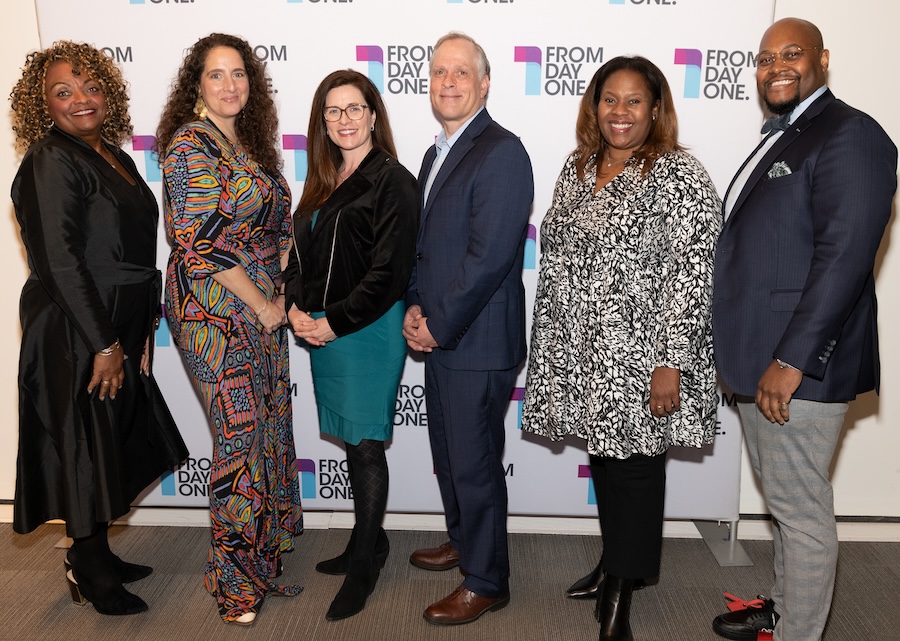New Voices: Bringing a More Inclusive Approach to Workplace Belonging


When D.L. Morriss, the diversity, equity, and inclusion partner for the Chicago-based Hinshaw & Culbertson law firm was leading a team debriefing on a case, he asked a female attorney to take notes.
As he ran quickly through the agenda, he realized he had assigned a woman this stereotypical role. “And I said, ‘Hey, you know what? I didn’t realize that I just did that,’” Morriss told moderator John Pletz, senior reporter for Crain's Chicago Business, during a recent panel at From Day One's Chicago conference.
Morriss reassigned who would be taking notes during the meeting. “As leaders, you have to be willing to be vulnerable,” he said. “You’ve got to be willing to be wrong, and call yourself out on it. That authenticity is what I hope my team resonates with.”
DEI is a Learning Process
One of the joys of working in the DEI space is that “you’re able to help people, understand what their values are, what they stand for, what their biases are, perhaps what they were raised with,” said Ekpedeme “Pamay” Bassey, chief learning and diversity officer for the Kraft Heinz Company. “They need to learn and unlearn and go through that process to become a more inclusive version of themselves.”
DEI is not a destination but a continuous journey, says Melissa Healy, senior VP, employee belonging and participation lead at Leo Burnett.
“There is no end game to diversity, or end game to belonging, or end game to inclusion,” she said. “I hope that everyone can start from a place and say, ‘I am a lifelong learner. I am continually curious.’”

Jeanette Kilo-Smith, vice president of diversity, inclusion, equity, and belonging for Zurich North America, says that giving people grace is crucial, as they will inevitably make mistakes when it comes to enhancing workplace inclusion.
“You can’t expect folks to go through whatever training or experience and then walk away with all the answers, because they won’t,” she said. “You’d be surprised by the common phrases that people say, they didn’t realize could be offensive to a group, or to a person. If I said some of them, I’m sure many of you would say, ‘Oh, I didn't realize that.’”
Including All Generations of Employees
Today’s workers span five generations, from the Silent Generation to Gen Z. “Whether or not you choose to learn how to engage in a respectful manner, there are people with different lived experiences, characteristics, backgrounds, of different ages,” Bassey said. “And if you want to have a community or an organization where there’s less friction and more productivity, there’s a reason to learn how to be a more inclusive leader.”
Andrea Cooper, Talkspace's chief people officer, says that different generations can learn from each other. For example, Gen Z is “leading the way with mental health and therapy,” she said.
“They’re talking about something that has always been kind of hidden or not allowed to be discussed,” Cooper said. “I think this new generation in the workforce is not willing to accept the silence on it.”
The Importance of Intersectionality
Individual factors such as age or gender are only a portion of someone’s overall identity, says Healy. “I’m not just a woman, right?” she said. “There’s so much more to who I am and what I bring to the table.”
Intersectionality is “less about segmenting groups and more about recognizing those intersections,” Cooper said. “If I think about myself, I identify as a woman, as a mom, as a lesbian, as a sister. There’s so many different things, and being able to talk about all those things is a lot more multidimensional than the way it was 10-15 years ago.”
Cooper says these conversations may not be easier, but in the long run they are more beneficial.
Pushing the Work Forward
The 2023 U.S. Supreme Court ruling on affirmative action programs has caused some concern within organizations, says Kilo-Smith.
However, “We’re not taking our foot off the gas,” she said. “What we’re continuing to focus on is creating that inclusive culture where everyone feels that they can grow and that they can thrive.”
Despite the Supreme Court ruling, “The sky is not falling” when it comes to DEI, Morriss said.
“I think it’s only going to continue to grow. We’ve already identified numerous studies that show the power that comes from diverse teams only increases when you add other diverse demographics. And that innovation leads to higher revenue and product profitability that many of our corporations appreciate on a regular basis.”
Mary Pieper is a freelance writer based in Mason City, Iowa.
The From Day One Newsletter is a monthly roundup of articles, features, and editorials on innovative ways for companies to forge stronger relationships with their employees, customers, and communities.